Masked Writer: Shotaro Ishinomori
On the 40th anniversary of Kamen Rider, Jonathan Clements examines the career of its record-breaking creator.
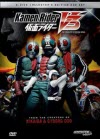
In 2008, ten years after the death of Shotaro Ishinomori, the Guinness Book of World Records officially acknowledged him as the most prolific solo comics author on the planet, with 770 stories spread across 128,000 pages. The ruling was the result of a subtle, posthumous arms race between Ishinomori’s estate and that of his mentor Osamu Tezuka, as each tried to prove their creator’s output was the greatest. Ishinomori’s family seized the high ground with the publication of a bespoke collected works, available largely on subscription, and filling a boggling 500 volumes. There were protests that Tezuka had drawn some 22,000 pages more than Ishinomori, but stretched over a “mere” 700 stories. With Guinness counting by titles, Ishinomori won the day, and nobody dared voice a complaint about the “solo” part — both Ishinomori and Tezuka employed legions of art assistants.
Tezuka, the creator of Astro Boy, remains the most famous figure in Japanese comics, partly because of his standing in the related anime world, but also thanks to Tezuka Productions, the faithful holding company that has diligently managed his fame and posthumous fortune. However, the Guinness ruling was a belated indicator of contention in the manga field — Tezuka’s light has shone so brightly that it has consigned many other manga creators to the shadows. Although known to some manga fans in the west, the likes of Ishinomori, Leiji Matsumoto and Mitsuteru Yokoyama have yet to gain the recognition abroad that their contribution to the manga field truly warrants. In Ishinomori, we have a creator with a single, constant and recurring obsession, refined and re-imagined across dozens of works, which would eventually coalesce into a fundamental archetype of modern Japanese science fiction. The global influence of Shotaro Ishinomori can be found on your television every week, if only you know where to look.
The Man With No Name
Ishinomori’s career was conducted for many years under the wrong name. Born Shotaro Onodera in 1938, the teenage art prodigy was headhunted by Osamu Tezuka’s comics studio while he was still at school. This landed him his first job as an art assistant in the early 1950s on Tezuka’s Astro Boy manga — sticklers at the Guinness organisation might like to speculate whether those pages should count for Tezuka’s total, or for Ishinomori’s. He made his professional debut as a manga artist in his own right in 1955 with “Second-Class Angel” in Manga Shonen magazine. He had asked for the pseudonym “Ishinomori”, an echo of his northern hometown of Ishinomaki, but an editorial flub omitted a crucial, single line, and left him stuck with the name “Ishimori”. He would keep it for three decades, until he reverted to the pen name he had always wanted.
One of a coterie of manga stars who accreted around Tezuka and the Tokiwa-sō apartment building in Tokyo, Ishinomori worked as a storyboarder on one of Tezuka’s earliest forays into animation, but was dissuaded from seeking commissions in the new-formed anime business, both by the ample opportunities already available to him in comics, and through the distraction caused by the death of his sister in 1959. Hence, while many fellow artists were working in anime by the 1960s, Ishinomori remained primarily a comics illustrator. He would subsequently become one of the founders of the animation company Studio Zero, but it never quite achieved the public profile of Tezuka’s pre-existing Mushi Productions.
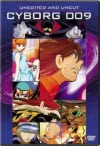
Ishinomori’s early work included manga for the girls’ market, such as an adaptation of Arthur Conan Doyle’s Sherlock Holmes adventure The Speckled Band and a manga version of Edgar Allan Poe’s Black Cat. Other adaptations include comics versions of D.H. Lawrence’s Lady Chatterley’s Lover, Orwell’s Animal Farm and several manga shorts based on SF by Japanese authors. Like many of his contemporaries, Ishinomori was forced to follow the market wherever it led, leading many of his best known serial works to stop and start in publications with wildly differing audiences. In the case of his famous Cyborg 009, the series began in two magazines for boys, before suddenly growing up for its appearance in a journal of the avant garde, then switching attitudes in a magazine for teenage girls, before sliding back into the boys’ market, then a magazine for teens, and finally ending its days in a magazine for anime fans that played to the nostalgia crowd. After Ishinomori’s death, it would be completed as a prose novel by his son Jo Onodera.
Oh, The Newmanity!
First conceived in 1964, amid the first flush of Cold War spy thrillers that elevated James Bond and The Man From U.N.C.L.E. to international stardom, Cyborg 009 features an international group of secret agents, bionic minions of an international crime organisation, who turn on their masters and are recruited into the forces of good. Cyborg 009 was the first of many Ishinomori stories in which the protagonist is part of, tied to, created by, and tempted by the allure of his own antagonist — an intriguingly ambiguous form of antihero that would take root within the Japanese SF tradition in many other venues.
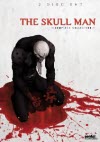
Ishinomori’s similar Bizarre Romanesque Graphic Novel Skull Man (1970) began as the third chapter in a series of one-shot supervillain stories. Forced to run with the ideas of others, and to begin with twists to tie up previous instalments, Ishinomori introduced a series of reversals that challenged readers’ assumptions about the earlier chapters. Inspired in part by the “Fiend With 20 Faces” of Ranpo Edogawa (see Salon Futura #5), Ishinomori’s protagonist was the adopted scion of a crime family, ruthlessly hunting the anonymous super-wealthy mastermind who murdered his real parents. The murderer is revealed as the Skull Man’s own grandfather, who has devoted his life to culling periodic manifestations of a new race of mutants, and who has hoped to lure the Skull Man to his lair so that he may immolate them both, along with the Skull Man’s telepath sister and shape-shifting sidekick.
As well as reaffirming Ishinomori’s preoccupation with turncoat, subversive antiheroes, the story was an early appearance of notions of the shinjinrui (the “New Breed”, “New Humans” or “Newmanity”), a buzzword in the Japanese mass media, holding that children born after 1961 were so different from previous generations as to be a different race. Initially a marketing concept born of changes in slang, fashion, outlook and diet, it had obvious application in the SF field, particularly in the assertion that the generation that remembered World War Two represented an outmoded, corrupt culture, and that modern youth was a new step in evolution. Ishinomori did not invent concepts of shinjinrui, nor was he its most famous proponent (that honour should probably go to Yoshiyuki Tomino, creator of the Gundam series and its mutant “Newtypes”), but he was one of the first manga creators to put it to such extensive and rewarding use.
Who Was That Masked Man?
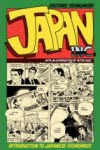
Ishinomori was also influential outside the SF genre, in particular with his samurai-era detective mysteries Sabu and Ichi Investigate, adapted into several other media. Hotel, is an account of the rise to prominence of a hotel manager in the upwardly-mobile boom and bust of the late 20th century. It, along with Ishinomori’s Japan Inc.: An Introduction to Japanese Economics [Purchase], formed key texts of Japanese yuppiedom; the latter book was also one of the earliest manga to be translated into English. Moreover, Ishinomori’s 55-volume Comics History of Japan spanned the period from the first mention of “the Land of the Rising Sun” in ancient Chinese chronicles, up to post-war growth and the 1964 Tokyo Olympics. It has sold eight million copies in Japan, but has never been translated. Ishinomori’s work covers an incredible number of genres, even to the extent of a series of graphic-novel biographies that ran in the 1970s and 1980s in the record magazine FM Recopal, beginning with jazz performers such as Charlie Parker, Louis Armstrong, and John Coltrane, before expanding to include pop music icons such as David Bowie and Queen.
Both Cyborg 009 and Skull Man were refined in Kamen Rider (literally Masked Rider) in which the putative minion of a global terror conspiracy escapes his masters before he is brainwashed, but after he has been upgraded with cybernetic and mutant augmentations. The story’s initial short-lived magazine appearance was a tie to its TV incarnation (first broadcast on 3rd April 1971) and Ishinomori’s name would appear as original creator on dozens of later spin-offs, all resting on globalised, crime-fighting, transforming superheroes, and toy-friendly line-ups of special vehicles.
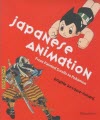
Ishinomori did not take sole credit for the creation of the Masked Rider. Brigitte Koyama-Richard’s recent Japanese Animation: From Painted Scrolls to Pokémon (2010) [Purchase] includes an interview with the former Toei vice president Yoshinori Watanabe, in which he claimed to have come up with two of the most iconic elements of Masked Rider himself. According to Watanabe, the concept of transforming heroes came from the sight of the spine of Kafka’s Metamorphosis (in Japanese, Henshin) on the shelf. Moreover, Watanabe also claimed that his inspiration for the ritualised poses struck by the hero had its origin in Japanese traditional theatre:
I therefore suggested styling this on the gestures of a kabuki actor when he comes onstage after crossing the hanamichi [flower way]. He performs what is known as a roppō, which is a kind of dance, by making large movements with his arms and legs. For greater emphasis, I asked the actors to shout “Henshin!” when they carried out these actions. This immediately became popular with children and they all began to imitate their heroes (Koyama-Richard 2010: 54).
In an unexpected development that pulled commerce out of a crisis, Masked Rider‘s leading man was injured in a motorcycle accident during filming of the tenth episode, forcing the producers to write in a mid-season change in the cast, and another when the actor had recovered. This led to the former lead’s return in tandem with his successor, a switch in focus that would be repeated in many subsequent iterations of the franchise, not the least for the potential in extra toys. After Masked Rider, it was only a matter of time before the ultimate paradigms of Japanese children’s sci-fi slotted into place …
Go, Go Go-Rangers
While sequels and reboots of Masked Rider continued to rotate on Japanese TV throughout the 1970s and 1980s, Ishinomori would recycle his favoured themes yet again with Secret Battleteam Goranger (1975), in which five colour-coded, transforming superheroes with martial arts skills, gimmicky weapons and signature vehicles battled to protect the Earth from a terrorist organisation. Although by no means the first TV show to include such elements, many of which can be traced back to Thunderbirds, Goranger is seen with hindsight as the first of an ongoing sequence of team shows that stretches up to the present day. Although his name dropped off the credits after the relatively unsuccessful JAQK Blitzkrieg Squad (1977), Ishinomori’s basic paradigm has been repeated on TV Asahi by a pseudonymous Tōei Studios house-name ever since, with the addition of giant robots, minor adjustments to storylines and periodic changes in underlying themes, such as the dance-based Battlefever J, the mythology-themed Blitzkrieg Battle Team Changeman, and the fairy-themed High-speed Battle Team Turboranger, among dozens of others. The best-known remains Dinosaur Battle Team Zyuranger/Beast Ranger (1992), not for any outright difference in content, but for the serial’s subsequent re-editing for the global market as Mighty Morphin’ Power Rangers, retaining Japanese stunt and action footage, but splicing in new storylines featuring local actors as the superheroes out of costume. In recent years, Ishinomori’s name has been restored to the credits as the “original co-creator”, most recently on the 35th show in the sequence, 2011’s Pirate Battle Team Gokaiger.
Ishinomori’s comics output declined in the 1990s, leading him to enlist the young artist Kazuhiko Shimamoto as an amanuensis on several finales and retellings in his last years; it is largely these later iterations, the work of another artist pastiching Ishinomori’s style, that have been translated into the English language, along with his Android Kikaider, another live-action hero-show that first found foreign audiences on Hawaiian TV, and subsequently as an anime.
In terms of themes, franchises and tropes, Ishinomori is no less influential a figure than Osamu Tezuka himself — sci-fi clichés he first defined have endured for a generation after his death, and show no sign of fading away. Tezuka, however, had better publicity, particularly in the English-speaking world, whereas Ishinomori’s legacy remains largely buried amid Saturday-morning rubber-monster shows. The trashy, formulaic repetitions of the many team shows is a world away from the angst-ridden Cold War rebels that first inspired them, but Ishinomori’s original idea has proved robust and lucrative enough to keep his name on several TV shows running a generation after his death. While loved by six-year-old children all around the world, Ishinomori’s science fiction creations have faded from critical sight — six-year-olds don’t vote, sit on awards committees or attend academic junkets. Despite many honours in the comics field, and immense contributions to the very fabric of Japanese children’s fiction, Ishinomori remained unacknowledged by the Sei’un Awards (Japan’s Hugos) during his lifetime. The continued endurance of the Power Rangers franchise and its imitators may yet show Ishinomori to have the most enduring impact in the long term.

Sample Video
A recent anime remake of Cyborg 009 takes “in media res” to new heights, beginning with its protagonist waking up in the middle of his transformation into a terrorist minion:
The original Masked Rider theme:
What happens when the Japanese original is excerpted and distilled and copied…? We get Kamen Rider Dragon Knight:
When baddies were bad… We give you Starfish Hitler:
Still going after 35 years. Ishinomori remains credited as a co-creator in Pirate Battle Team Gokaiger (2011):
If you enjoyed this article, please consider supporting Salon Futura financially, either by buying from the Wizard's Tower Bookstore, or by donating money directly via PayPal.
Pingback: The Official Schoolgirl Milky Crisis Blog » Blog Archive » A New Type of Bomb